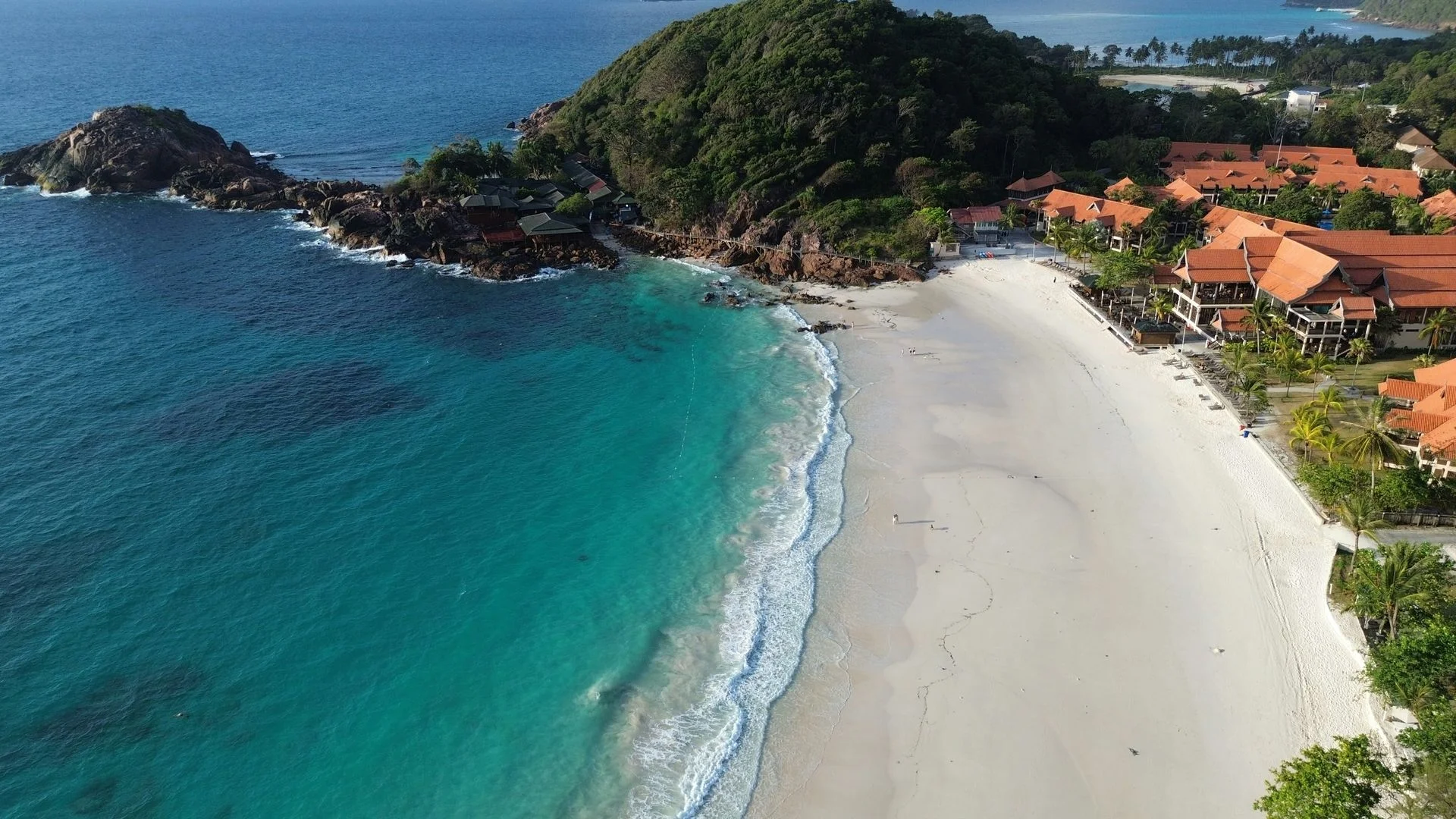Scuba Diving in Redang
The Ultimate Guide
Pulau Redang is the largest island in Terengganu Marine Park and one of Malaysia’s most beautiful beach destinations. Its powder‑white sand, crystal‑clear lagoons and gently sloping reefs make it a favourite for snorkellers and divers alike. The island is ringed by more than twenty dive sites, from shallow coral gardens and turtle cleaning stations to submerged pinnacles and small wrecks. The reefs are healthy and full of life: schooling snappers and fusiliers flash over hard coral plateaus, while reef sharks, bumphead parrotfish and Napoleon wrasse patrol the edges. Redang’s relaxed atmosphere and warm, calm water make it a great place for beginners, yet experienced divers will enjoy exploring deeper seamounts and searching for macro critters among the coral heads.
Difficulty
Easy
Temperature
28-31°C
Visibility
15-30m

Diving Highlights
Best Months to Dive
Getting to Redang for Diving
✈️Transportation
Redang has a small private airstrip served by SKS Airways from Subang Airport in Kuala Lumpur, but most visitors travel via Kuala Terengganu.
Fly into Kuala Terengganu Airport (TGG) from Kuala Lumpur or other Malaysian cities and take a taxi (20–35 minutes) to either Shahbandar Jetty or Merang Jetty.
Ferries from Shahbandar take about 1½ hours; speedboats from Merang take 45 minutes.
During the dry season ferries run several times a day; in the monsoon season services cease and the island closes.
Country
Malaysia
Currency
Malaysian Ringgit
Electricity
240V, 50Hz, UK plug
Cost of a Dive Trip in Redang
Day Trip
Dive Resort
Meal
Accommodation
Best Dive Sites in Redang
🐠Tanjung Tokong (Big Mount)
A submerged seamount rising from 30 m to 12 m on the north of the island. Currents attract barracuda, trevally and bumphead parrotfish that swirl above plateaus covered in plate corals. Schools of fusiliers and surgeonfish streak by while sharks patrol the deeper drop‑offs.
🐢Chek Isa
A sheltered coral garden with sandy patches and bommies between 5 m and 20 m. It’s perfect for training and photography with healthy hard corals, resident green turtles, blue‑spotted stingrays and countless reef fish. Macro life hides among the coral heads.
🦈Tunnel Point (Tanjung Gua Kawah)
A spur of reef on Redang’s southern tip where a natural swim‑through leads divers from 18 m up to 8 m. The tunnel is lined with soft corals and sponges and home to sweetlips and soldierfish. Outside you’ll find large sea fans, table corals and the occasional leopard shark resting on the sand.
🐙Terumbu Putih (White Reef)
Shallow limestone reef on the west side where powdery sand reflects sunlight, giving the reef a bright, almost glowing appearance. Schools of rabbitfish and goatfish graze over leather corals, and curious batfish often approach divers. Great for afternoon dives.
🐚Tanjung Tengah (Turtle Bay)
This sandy bay on the west side of Redang is a resting and cleaning station for green and hawksbill turtles. Gentle slopes from 5 m to 15 m are covered in hard corals and sponges. Divers often spend their whole dive with turtles and may also spot bumphead parrotfish and giant clams.
🦑Frigate Wreck / Kelong Reef
A small artificial reef built from a decommissioned fishing platform (kelong) lying in 18–22 m. Coral growth has turned it into a thriving habitat for groupers, lionfish, pufferfish and schooling glassfish. Macro creatures like shrimps and nudibranchs abound on the metal beams.
What Divers Say About Diving in Redang
Alex Thompson
Marine Biologis / DivemasterRedang is a dream for divers who love warm, clear water and colourful reefs. Most sites are gentle slopes or coral bommies between 10 and 25 metres, so you can spend long, relaxing dives watching turtles munch on sponges, blue‑lined snappers schooling over hard coral plateaus and maybe a shy blacktip reef shark gliding past the edge. The deeper seamounts like Tanjung Tokong offer adrenaline if you crave it—schools of barracuda and trevally swirl in the currents and bumphead parrotfish graze like underwater buffalo. In the shallows you’ll find juvenile sweetlips hiding among soft corals and plenty of nudibranchs for macro hunters. Surface intervals are pure holiday: white‑sand beaches, coconut shakes and afternoons lazily snorkelling in turquoise lagoons.
Frequently Asked Questions About Diving in Redang
When is the best time to dive Redang?
The dry season from late March to October brings calm seas, clear water and full resort operations. The island closes during the monsoon season from November to February due to rough seas and low visibility.
What marine life can I see?
You’ll encounter green turtles, reef sharks, bumphead parrotfish, Napoleon wrasse, barracuda, schooling snappers and fusiliers. Macro life includes nudibranchs, pipefish and seahorses. Whale sharks and manta rays are occasional visitors.
Are the dives difficult?
Most sites are shallow slopes with mild currents and are suitable for beginners. A few deeper seamounts and pinnacles offer more challenging conditions for advanced divers.
How many dive sites are around Redang?
There are more than twenty sites within the marine park including coral gardens, cleaning stations, walls and small wrecks.
What are the water temperatures and visibility like?
Water temperatures typically range between 28–31 °C and visibility is usually 15–30 m, with the clearest water in the dry season.
How do I get there?
Fly to Kuala Terengganu then take a taxi to Shahbandar or Merang Jetty for a ferry/speedboat to Redang. Alternatively, SKS Airways flies direct from Kuala Lumpur’s Subang Airport in season.